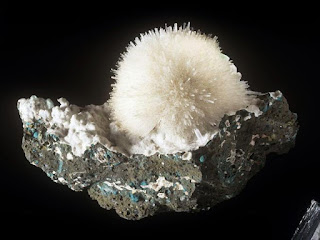Mesolite
The needle-like crystals of this mesolite deposit from India give it a dandelion's form. Its crystalline structure formed inside a bubble of volcanic gas as igneous rock cooled. Mesolite's many striking crystal formations make it a popular mineral for collectors.
Rocks themselves are made of clusters or mixtures of minerals, and minerals and rocks affect landform development and form natural resources such as gold, tin, iron, marble, and granite.
Silicates—including quartz, mica, olivine, and precious minerals such as emeralds—are the most common class of minerals, as well as the major components of most rocks. Oxides, sulfides, sulfates, carbonates, and halides are other major mineral classes.
Gemstones
Many minerals form beautiful crystals, but the most prized of all are gemstones. Uncut gems often look fairly ordinary–like rocks. It's only when they are cut and polished that they obtain the brilliance and luster that gives them their value.
Historically, gems have been divided into precious and semiprecious classes. There are a number of semiprecious gems, many quite beautiful, but diamonds, rubies, sapphires, and emeralds continue to qualify as "precious." (At one time, amethyst was also considered a precious gem, but large reserves were later found in Brazil, reducing its value.)

